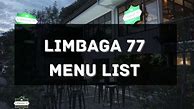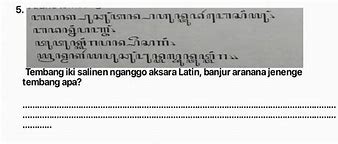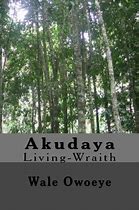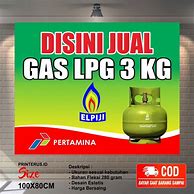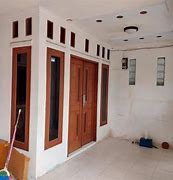
Pengolahan Sampah di ITS dilakukan dengan prinsip 3R yaitu Reuse, Reduce, dan Recycle. Prinsip 3R diimplementasikan melalui pengurangan penggunaan bahan sekali pakai, drop box E-waste, pemilahan sampah.
This laboratory was built to meet the demands and challenges of waste and hazardous waste management problems in Indonesia. Apart from carrying out academic and research activities, in accordance with the Catur Dharma of Universitas Islam Indonesia, this laboratory also provides services to external parties in analytical services related to its competencies. This laboratory will be equipped with modern equipments, experienced analysts and technicians, supported by research staffs who specialized in the field of waste and hazardous waste management.
It is important to carry out analysis and characterization of solid/sludge and hazardous waste with multiple targets, namely: – Knowing the composition and initial characteristics of waste – Knowing the possibility of treatment and recycling potential – Knowing the handling treatment that should be carried out – Predicting the impact of waste and hazardous waste handling on humans and the environment
Apart from efforts to reduce waste before it is formed, in general waste handling includes:
These activities can have an impact on the waste itself as well as on humans and the surrounding environment. This requires laboratory analysis, such as:
Provision of Consulting Services
Apart from providing laboratory services, this laboratory also provides consulting services to answer various problems in handling solid and hazardous waste in a more comprehensive manner, with the support of reliable facilities and human resources. Consulting services can take the form of analysis of management alternatives and impacts:
Laboratory Equipments
Laboratory Equipments
- Banyak yang mengira sampah dan limbah tidak berbeda karena sama-sama kotor. Jangan salah, sampah dan limbah berbeda jauh, dengan tahu maknanya diharapkan orang bisa lebih paham mengelola sampah atau limbah.
Ketika menemukan sampah atau limbah, kesulitan pertama yang terjadi adalah susahnya membedakan sampah atau limbah khususnya di kalangan industri. Belum lagi masalah limbah yang mengandung B3 (Bahan Berbahaya dan Beracun).
Khusus limbah B3 terdapat peraturan perundangan yang mengaturnya lebih spesifik. Sedangkan mengenai sampah baru-baru ini terdapat peraturan perundangan yang mengikat, setelah sekian lama tidak ada sistem pengelolaan sampah yang semakin menumpuk di seluruh area negara ini.
SCROLL TO CONTINUE WITH CONTENT
Pada kenyataannya sampah dikenal di lingkungan rumah tangga, sedangkan limbah dikenal di lingkungan industri. Memang anggapan ini benar sesuai dengan pengertian harafiah berdasarkan peraturan perundangan lingkungan.
Dilansir dari Undang-Undang RI No. 18 Tahun 2008 dan Peraturan Pemerintah No. 18 Tahun 1999 tentang sampah dan limbah dapat dibedakan sebagai berikut:
"Dengan adanya pengertian tersebut maka kita dapat dengan mudah melakukan identifikasi antara sampah dan limbah, ke depannya kita dapat lebih memahami dan melakukan pemilahan sampah dan limbah dengan baik dan benar," bunyi siaran pers Family Environmental Edutainment, Jumat (23/7/2010).
Intinya baik sampah atau limbah harus dapat dikelola dengan baik dan benar sehingga meminimalisasi adanya sampah dan limbah di area TPA (Tempat Pembuangan Akhir).
Maka buatlah sampah menjadi suatu yang berharga. Jangan hanya berpikir sampah menjadi kotoran yang tidak berarti, bahan cemoohan, bahan tontonan atau bahkan menjadi bahan komplain.
Acara Family Environmental Edutainment yang diselenggarakan di Bumi Perkemahan Cibubur 23 Juli 2010, pukul 09.00 - 16.00 WIB akan mengajak masyarakat mengikuti pelatihan dan workshop kompos, kreasi barang bekas, kalkulator jejak karbon, pembutan lubang resapan biopori, merancang rumah sehat ramah lingkungan, daur ulang kertas dan lainnya.
This study aims to look at the form of the implementation of environmental education in the form of utilization of household waste (inorganic). nvironmental education is a process arbitrarily person to conduct environmental stewardship for sustainable survival. The increasing volume of waste requiring serious treatment of the waste management. Waste management does not use methods and techniques that are environmentally friendly waste management than would be a negative impact on health will also be very disruptive both residential environmental preservation, forest, rice fields, rivers and oceans. One of the forms of waste is household waste in the form of garbage anorgnik. This litter is very dangerous for health and the environment because it is made from inorganic sources of non-renewable natural and contains no chemicals, but its existence is only glimpsed one eye. Utilization of inorganic waste is one that can be done by the whole society to preserve the environment. This research is a descriptive study and a review of the literature. This study hopes to sustainable environmental education is expected to contribute knowledge to all levels of society on the importance of inorganic waste.
utilization of household waste, inorganic waste, implementation, environmental education
Azwar Azrul. 1986. Pengantar Ilmu kesehatan Lingkungan. Jakarta: Mutiara Sumber Widya.
Ismoyo IH. 1994. Kamus Istilah Lingkungan. Jakarta: PT. Bina Rena Pariwara.
Miles. Huberman. 1992. Analisis Data Kualitatif. Diterjemahkan oleh tjetjep rohendi. Jakarta: Universitas Indonesia.
Moleong. L. J. 2004. Metodologi penelitian kualitatif. Bandung: Remaja Rosdakarya.
Nitikesari, Putu Ening. 2005. Analisis Tingkat Partisipasi Masyarakat dalam Penanganan Sampah Secara Mandiri di Kota Denpasar. Tesis Magister Program Pascasarjana Universitas Udayana, Denpasar.
Sutopo, Heribetus. 1988. Pengantar Penelitian Kualitatif Dasar Teorotis dan Praktis. Surakarta: Pusat Penelitian UNS.
Sutoyo, Bagong. 2013. Fenomena gerakan mengolah sampah. Jakarta: Pusat Komunikasi publik kementrian pekerjaan umum.
Tim Penulis PS. 2008. Penanganan pengolahan sampah. Jakarta: Penebar Swadaya.
Undang-Undang No.23 Tahun.1997 tentang Pengelolaan Lingkungan Hidup.
Undang-Undang No. 18 Tahun 2008 tentang Pengelolaan Sampah.
https://www.google.co.id/search?q=definisi+limbah&hl=id#hl=id&q=definisi+sampah&s
tart=10. 6 Agustus 2013.
UPAYA MENGOLAH LIMBAH SAMPAH MENJADI PELUANG SOCIAL ENTERPRISE EKONOMI KREATIF BAGI GENERASI-Z
The problem of waste in Indonesia has reached 175,000 tons/day which is equivalent to 64 million tons/year, which until now has been managed by being transported and dumped in the final processing site (TPA) because people still have the perception that waste is a waste material that is considered useless. The COVID-19 pandemic in 2020 has limited access to activities outside the home, ultimately changing consumer behavior by shifting the way to shop for their needs to online shopping. The study method utilized social media platform to distribute the online webinar information to gathered large number of participants. Thus, the study find that the Generation Z is a generation that is synonymous with digital technology and information, as a Collaborative Generation, a generation that knows the "sharing economy" is the foundation of hope to take advantage of waste problems as challenges and opportunities that can create a generation of Social Entrepreneurs who create waste into products that have bargaining power and competitiveness in the creative economy market through social media or e-commerce platforms.
Keywords: Creative economy, Gen Z, Waste, Social enterprise
Ekonomi, Sosial, dan Budaya







